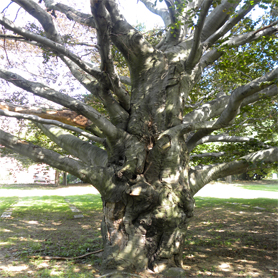The following are some statistics on just how important trees are in a community setting.
“The net cooling effect of a young, healthy tree is equivalent to ten room-size air conditioners operating 20 hours a day.”—U.S. Department of Agriculture
“Landscaping can reduce air conditioning costs by up to 50 percent, by shading the windows and walls of a home.” — American Public Power Association
“If you plant a tree today on the west side of your home, in 5 years your energy bills should be 3% less. In 15 years the savings will be nearly 12%.” —Dr. E. Greg McPherson, Center for Urban Forest Research
“A mature tree can often have an appraised value of between $1,000 and $10,000.” —Council of Tree and Landscape Appraisers
“In one study, 83% of realtors believe that mature trees have a “strong or moderate impact” on the salability of homes listed for under $150,000; on homes over $250,000, this perception increases to 98%.” —Arbor National Mortgage & American Forests
“Landscaping, especially with trees, can increase property values as much as 20 percent.”—Management Information Services/ICMA
“One acre of forest absorbs six tons of carbon dioxide and puts out four tons of oxygen. This is enough to meet the annual needs of 18 people.”—U.S. Department of Agriculture
“There are about 60-to 200- million spaces along our city streets where trees could be planted. This translates to the potential to absorb 33 million more tons of CO2 every year, and saving $4 billion in energy costs.”—National Wildlife Federation
“Trees properly placed around buildings can reduce air conditioning needs by 30 percent and can save 20 – 50 percent in energy used for heating.”—USDA Forest Service
“Trees can be a stimulus to economic development, attracting new business and tourism. Commercial retail areas are more attractive to shoppers, apartments rent more quickly, tenants stay longer, and space in a wooded setting is more valuable to sell or rent.”—The Arbor Day Foundation
“Healthy, mature trees add an average of 10 percent to a property’s value.”—USDA Forest Service
“The planting of trees means improved water quality, resulting in less runoff and erosion. This allows more recharging of the ground water supply. Wooded areas help prevent the transport of sediment and chemicals into streams.”—USDA Forest Service
“In laboratory research, visual exposure to settings with trees has produced significant recovery from stress within five minutes, as indicated by changes in blood pressure and muscle tension.”—Dr. Roger S. Ulrich Texas A&M University
“Nationally, the 60 million street trees have an average value of $525 per tree.”—Management Information Services




